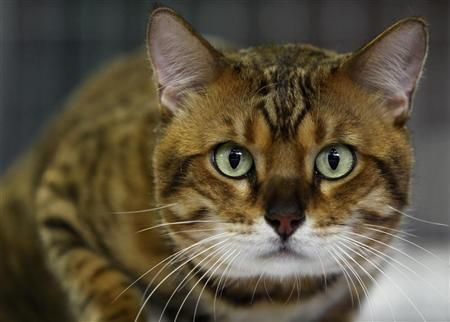Study on how animals clean themselves may pave the way to keep robots free from dirt (VIDEO)

A team of researchers sought to study the many ways hair allows animals to remain dirt-free which may have implications for keeping manmade structures, such as sensors and robots, free from pollutants, pollen and dirt.
Scientists at the Georgia Institute of Technology combed through more than two dozen studies and did surface measurements for 27 mammals and insects to better understand how animals are able to clean themselves.
“Animals likely evolved with hair in order to stay warm. But it also brings a burden,” said David Hu, a Georgia Tech associate professor who co-led the study. “More hair means more surface area that can trap dirt, dust and pollen.”
Hu and his mechanical engineering Ph.D. student, Guillermo Amador, ran calculations to find the true surface area of animals, or the surface area that includes every location where dirt can be collected. The hairier it is, the larger the creature’s true surface area. In fact, the team says it’s 100 times greater than its skin surface area.
“A honeybee’s true surface area is the size of a piece of toast. “A cat’s is the size of a ping pong table. A sea otter has as much area as a professional hockey rink,” said Hu.
With all that surface area, the animals have to learn ways to keep away all the dirt. It turns out that animals use a variety of methods to stay clean, such as depending on non-renewable strategies and using their own energy.
“Dogs shake water off their backs, just like a washing machine,” said Amador, who recently graduated. “Bees use bristled appendages to brush pollen off their eyes and bodies. Fruit flies use hairs on their head and thorax to catapult dust off of them at accelerations of up to 500 times Earth’s gravity.”
Other animals and insects use more efficient, renewable cleaning tactics.
Eyelashes, for example, protect mammals by minimizing airflow and funneling particles away from eyes. Cicadas have sharp points on their wings that act as pincushions, essentially popping airborne bacteria like water balloons.
These renewable cleaning tactics have the Georgia Tech team thinking about applications for the technology.
“Understanding how biological systems, like eyelashes, prevent soiling by interacting with the environment can help inspire low-energy solutions for keeping sensitive equipment free from dust and dirt,” said Hu. “Drones and other autonomous rovers, including our machines on Mars, are susceptible to failure because of the accumulation of airborne particles.”
Amador said one of the biggest takeaways of the study for engineers is the idea that hairiness may actually improve cleanliness, according to a report at Phys.org.
"Traditionally when we want to keep something clean we make it really smooth so nothing will stick to it," he said. "But in biology that is not the case. We see these animals that want to maintain cleanliness actually make themselves hairier."
He suggests that putting hair-like structures around surfaces we want to protect may prevent accumulation of particles, just like it does in the animal world.
Source: YouTube/Georgia Tech
Contact the writer at feedback@ibtimes.com.au or tell us what you think below.




















